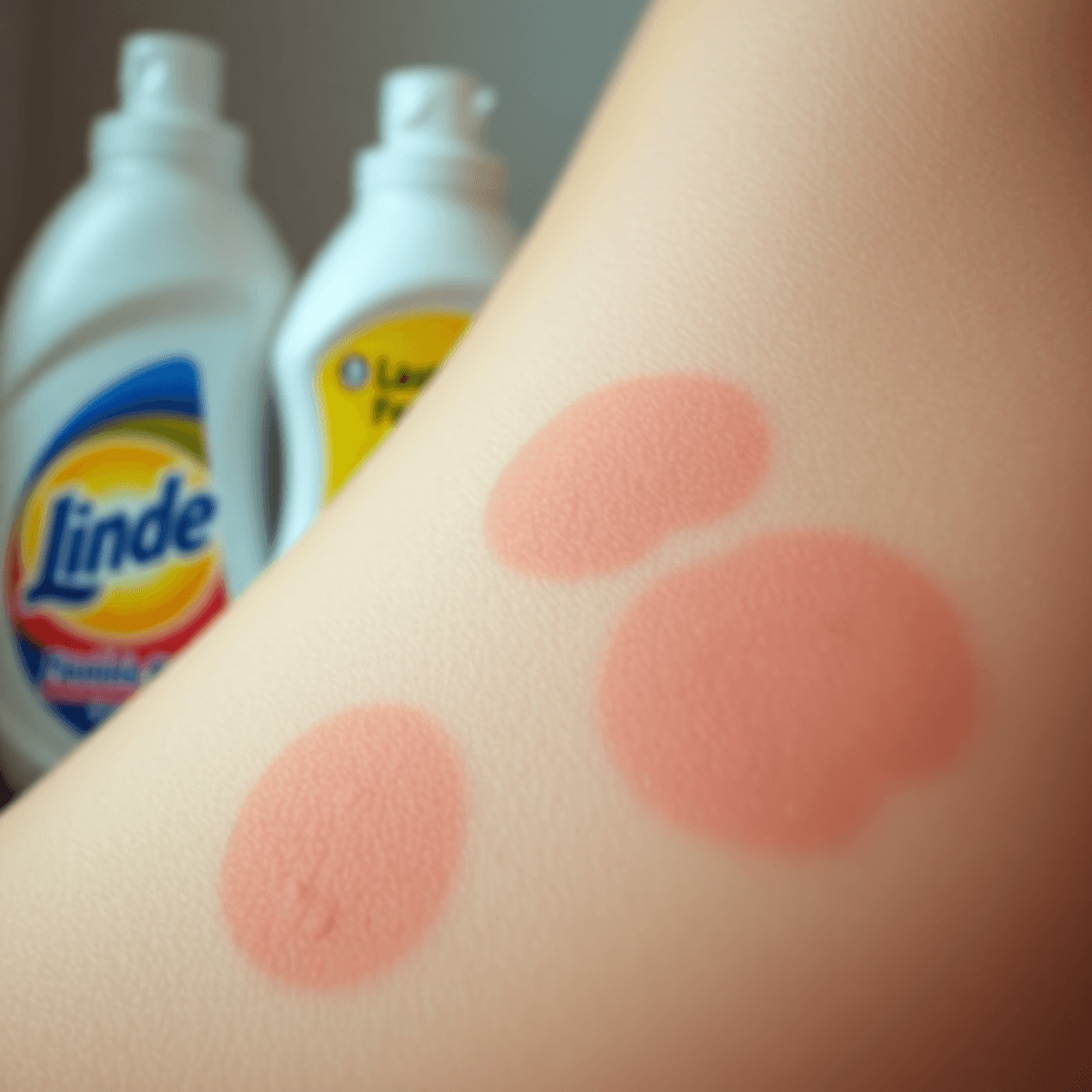Ear Eczema: How to Manage Weeping and Cracked Skin

Understanding Ear Eczema Symptoms
Ear eczema is a condition that affects the skin in and around your ears, leading to discomfort and irritation. This condition manifests through various symptoms, often causing distress if left untreated. Addressing these symptoms promptly is crucial to prevent further complications and maintain overall ear health.
Common Symptoms of Ear Eczema
Commonly, individuals with ear eczema experience:
- Dryness: The skin tends to become dry and flaky.
- Itchiness: Persistent itching can lead to further irritation.
- Inflammation: Affected areas may appear red and swollen.
- Cracking and Weeping: In more severe cases, the skin might crack or weep, producing a clear fluid that can crust over.
Ignoring these signs might escalate issues, potentially leading to infections or hearing problems like tinnitus. By recognising and managing these symptoms early on, you can maintain comfort and avoid significant complications associated with ear eczema.
Importance of Understanding Ear Eczema
Understanding the nature of ear eczema equips you with the knowledge necessary for effective treatment. Whether you're dealing with mild dryness or more alarming symptoms like weeping and cracks, being informed will guide you toward appropriate management strategies.
It's also important to note that ear eczema is just one form of a larger issue known as eczema, which can manifest in various forms with different causes.
For instance, the persistent itchiness could be exacerbated by stress, which has been shown to have detrimental effects on skin health. Understanding this connection between stress and skin health could provide valuable insights into managing your symptoms more effectively.
Natural Treatment Options for Ear Eczema
In terms of treatment options, there are several natural solutions available that can provide relief from the discomfort associated with eczema. Products made from 95% natural ingredients have been effective for many individuals suffering from similar conditions. Some of these solutions include oils such as cassis seed oil, which have been known to offer surprising health benefits including relief for skin conditions like eczema.
Types of Ear Eczema
Understanding the different types of ear eczema is crucial for effective management. Each type has distinct characteristics and may require unique approaches to treatment.
1. Atopic Dermatitis
Often associated with dry, flaky skin, atopic dermatitis is a chronic condition that can affect the ears. It is linked to an overactive immune response and a weakened skin barrier, leading to dryness and irritation. Individuals with a family history of allergies are more prone to experiencing this form of eczema. For a deeper understanding of eczema vs dermatitis vs psoriasis, it's important to note that atopic dermatitis falls under the broader category of eczema.
2. Allergic Contact Dermatitis
This type occurs when the skin reacts to specific allergens or irritants. Common culprits include jewellery metals like nickel, cosmetics, or personal care products. Identifying and avoiding these triggers is essential for managing symptoms.
3. Asteatotic Eczema
Also known as xerotic eczema, it manifests as extremely dry, scaly skin. It is often exacerbated by cold, dry weather conditions and low humidity levels. Hydration and maintaining a moisturised skin barrier become critical in controlling asteatotic eczema.
4. Seborrheic Dermatitis
This variant is caused by an overgrowth of Malassezia yeast on the skin. It presents as crusty patches often found in oily areas such as the scalp and ears. Antifungal treatments can be effective in reducing symptoms like itching and redness associated with seborrheic dermatitis.
In managing these various types of ear eczema, it's worth considering natural remedies or products that have received positive feedback from users. For instance, 1936 Original offers a range of products that have garnered authentic customer reviews for their effectiveness in treating skin conditions.
What Causes Ear Eczema?
Understanding what causes ear eczema is key to managing and preventing flare-ups. Various factors are known to influence the development and severity of this condition.
Environmental Irritants and Temperature Changes:
- Irritants such as soaps, shampoos, and hair products can aggravate the sensitive skin around the ears, leading to eczema flare-ups.
- Exposure to certain metals, like nickel in jewellery, may also act as an eczema trigger.
- Temperature fluctuations—extreme cold or heat—can exacerbate symptoms by drying out the skin or causing sweating, both of which can worsen ear eczema.
Genetic Factors:
- A significant role is played by genetics in developing ear eczema. If you have a family history of eczema or related conditions such as asthma and hay fever, your likelihood of experiencing ear eczema increases.
- Genetic predisposition can affect how your immune system reacts to environmental factors, making you more susceptible to flare-ups.
Recognising these triggers allows for better management strategies. By identifying specific irritants and understanding the influence of genetic factors, individuals are better equipped to reduce the frequency and severity of ear eczema episodes.
Recognising the Symptoms of Ear Eczema
Identifying ear eczema symptoms is crucial for effective management. Commonly, individuals experience itchiness and dryness in and around the ear area. These symptoms often lead to discomfort and can interfere with daily activities.
In advanced cases, more severe symptoms may develop:
- Weeping: This refers to a clear or slightly yellow discharge from the affected skin, indicating inflammation or possible infection.
- Cracking: The dry patches can become so brittle that they crack, leading to pain and heightened sensitivity.
- Risk of Infection: The open sores from cracking and weeping increase the risk of bacterial infections, which may cause additional complications.
Ear eczema can manifest anywhere along the ear's structure, affecting areas such as the pinna, meatus, external auditory canal, or even behind the ears. Recognising these symptoms early on is key to preventing escalation and ensuring appropriate treatment measures are taken.
Understanding these signs is a step towards better managing ear eczema flare-ups and maintaining healthy skin around this sensitive region.
Home Remedies for Managing Ear Eczema Flare-Ups
Effectively managing ear eczema flare-ups at home can significantly improve your comfort and skin health. Here are some practical home remedies for eczema management:
1. Moisturizing with Petroleum Jelly or Aquaphor
Keeping the affected area well-hydrated is crucial. Applying petroleum jelly or Aquaphor can create a protective barrier, locking in moisture and preventing further cracking or weeping of the skin. These ointments are non-irritating and help soothe the dry, itchy patches commonly associated with ear eczema.
2. Cool Water Baths
Taking cool water baths can provide immediate relief from itching and discomfort. The cool temperature helps reduce inflammation and soothes irritated skin. After bathing, gently pat the skin dry and apply a suitable moisturizer to retain moisture.
3. Antihistamines like Benadryl
Over-the-counter antihistamines such as Benadryl may be beneficial in reducing itchiness and allergic reactions that contribute to eczema flare-ups. They work by blocking histamine, a substance in the body that causes allergic symptoms.
In addition to these remedies, it's worth considering incorporating products like the 1936 Original Pain Relief Cream into your skincare routine. With 95% natural ingredients, this cream is leading in natural pain treatment and could offer additional relief from the discomfort associated with ear eczema.
Being consistent with these practices helps maintain skin hydration and minimize potential triggers that exacerbate symptoms.
When to Seek Medical Help for Ear Eczema?
Persistent ear eczema symptoms may require medical intervention. Consult a specialist if you struggle to control the condition or experience severe complications, such as hearing issues. Some signs that you should seek professional advice include:
- Hard-to-control symptoms: If home remedies and over-the-counter treatments offer no relief.
- Severe complications: Hearing problems like tinnitus or possible hearing loss.
A dermatologist referral can be crucial in managing difficult cases. They can provide treatments tailored to your needs, including prescription medications or therapies, ensuring comprehensive care for symptoms like weeping and cracks.
FAQs
What are the common symptoms of ear eczema?
Commonly, individuals with ear eczema experience dryness, weeping, and cracked skin in and around the ears.
What types of ear eczema exist?
There are several types of ear eczema, including Atopic Dermatitis, Allergic Contact Dermatitis, Asteatotic Eczema, and Seborrheic Dermatitis.
What causes ear eczema?
Ear eczema can be caused by environmental irritants such as soaps and shampoos, temperature changes, and genetic factors that play a significant role in its development.
What are some natural treatment options for ear eczema?
Natural treatment options for ear eczema include moisturizing with petroleum jelly or Aquaphor, taking cool water baths for immediate relief, and using over-the-counter antihistamines like Benadryl to alleviate itching.
How can I manage ear eczema flare-ups at home?
To manage ear eczema flare-ups at home effectively, keep the affected area well-hydrated, take cool water baths for relief, and consider antihistamines to reduce itching.
When should I seek medical help for ear eczema?
If you experience persistent ear eczema symptoms that do not improve with home remedies or worsen over time, it may require medical intervention.










